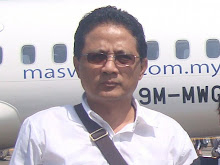The Jakarta Post | Tue, 11/08/2011 11:15 AM A | A | A |-Klipping The Jakarta Post
When the Association of Southeast Asian Nations (ASEAN) was founded in 1967, it was a loose regional organization. In its journey after four decades, ASEAN now has a complete charter, which gives it a legal entity, and a grand design to build an ASEAN Community that is a caring and sharing society. But the question is how to create a stronger ASEAN to accomplish this mission and bring peace and prosperity to its 600 million people.
It is good that all the members agreed to build a community with three pillars — ASEAN Political-Security Community (APSC), ASEAN Economic Community (AEC) and ASEAN Socio-Cultural Community (ASCC) — by 2015. But, what about after 2015?
The 10-members — Indonesia, Brunei, Cambodia, Laos, Malaysia, Myanmar, the Philippines, Singapore, Thailand and Vietnam — have agreed to create a single market and shared production base as part of the AEC objectives and a “RICH” ASEAN. How do they define rich?
RICH means resilient, inclusive, competitive and harmonious.
“ASEAN members must take meaningful measures to promote RICH, especially resilience and inclusiveness,” Djisman S. Simandjuntak, a noted economist with the Centre for Strategic and International Studies (CSIS), said.
Simultaneously, ASEAN is creating a common political platform to formulate a common perception regarding global issues. Indonesia put forward a new initiative for the 2011 ASEAN chairmanship, the ASEAN Community in a Global Community of Nations. It is an appropriate move and a first step in the right direction, especially to address the challenges that will emerge after 2015.
ASEAN needs a stronger intellectual leadership to achieve its ambitious agenda. Indonesia, the region’s most populous nation and the only ASEAN member in the G20, must lead the organization, whether it holds the ASEAN chair or not, to accomplish this essential mission.
As ASEAN moves to build its community and on the other hand engage global powers like the US, Russia, China, India, Japan and South Korea under the East Asia Summit, people are asking whether ASEAN has the institutional capacity and resources to undertake such an ambitious task.
That is why it has become one of top priorities for Indonesia as ASEAN chair to empower the ASEAN Secretariat, which is currently under-staffed and has insufficient resources to fulfill its developing mandate.
“We need a stronger budget for ASEAN commensurate with its regional integration,” Djisman said.
According to CSIS executive director Rizal Sukma, ASEAN must introduce a sanctions mechanism in implementing the ASEAN agenda.
“Member states must change the ASEAN Charter to include a sanctions mechanism. Then and only then will ASEAN progress. Currently it is voluntary to implement ASEAN agreements,” Rizal said.
ASEAN’s main weakness as well as strength is its diversity. There is a huge difference among member countries in terms of incomes, human capital, political systems, institutions and infrastructure etc.
The biggest challenge for ASEAN is how to involve people in the core processes of ASEAN. After all it is an inter-governmental organization. There is no representation of “the people”. There is a notion that it is an organization of officials. Indonesia, the current chair of ASEAN, wants to change this perception and to give more say to the people in ASEAN affairs.
“We want ASEAN to be a people-centered, people-oriented and people-driven organization. People should benefit from ASEAN, then and only then is it meaningful,” Foreign Ministry’s director-general of ASEAN Cooperation Djauhari Oratmangun said at a symposium on Moving ASEAN Community Forward into and Beyond 2015 in Jakarta recently.
Another important challenge for ASEAN is the lack of awareness among people in Southeast Asia. Here lies the role of media. Communications and Information Minister Tifatul Sembiring has urged the media to inform the public about what ASEAN does, as well as what is achieved in ASEAN meetings.
“We ask the mass media to help the government disseminate all relevant information regarding the implementation of each ASEAN Summit to make it a success and have a positive impact on all ASEAN member countries,” Tifatul told Antara news agency.
Next week Indonesia, as ASEAN Chair will host the 19th ASEAN Summit and an East Asia Summit meeting in Bali.
Another important aspect that contributes largely to the empowerment of ASEAN is connectivity, which can be categorized into three parts — institutional connectivity (trade liberalization, facilitation and capacity building), physical connectivity (transportation facilities, logistics and ICT) and people to people connectivity.
Connectivity is the real benefit for people in ASEAN. It raises the welfare of the people and reduces development gaps. It can stimulate economic activities and generate income for the people.
In the wider East Asia Summit concept, if ASEAN really wants to maintain its centrality, it needs to strengthen its internal cohesion and deliver benefits to its members. In addition, the East Asia summit could become an important platform for ASEAN to maintain a “dynamic equilibrium” between the members of ASEAN and the other superpowers in the region.
— JP/Veeramalla Anjaiah
Subscribe to:
Post Comments (Atom)

No comments:
Post a Comment